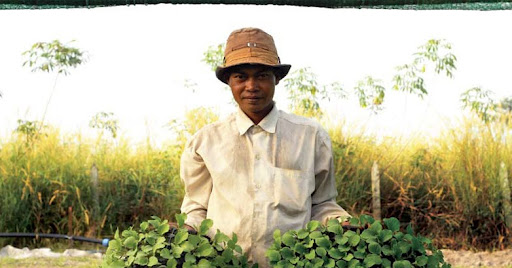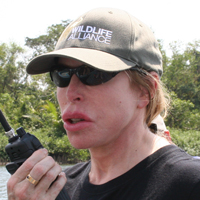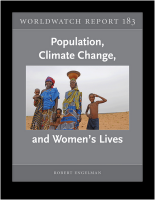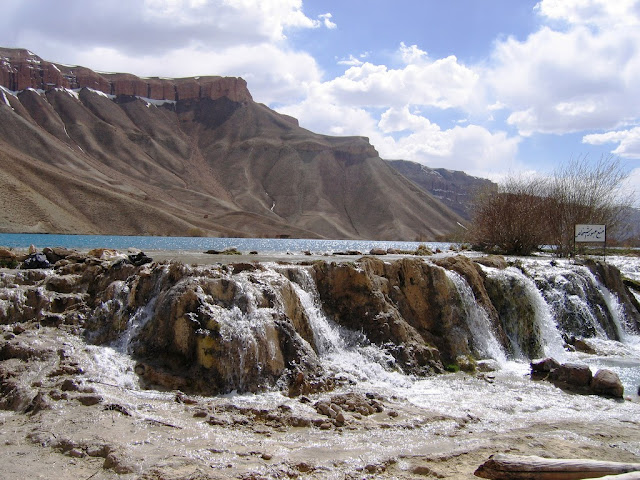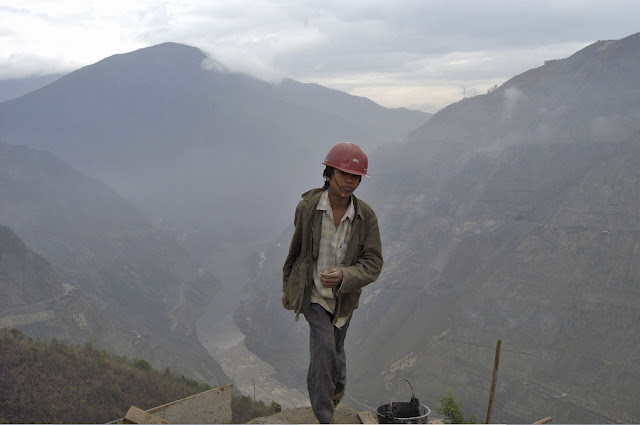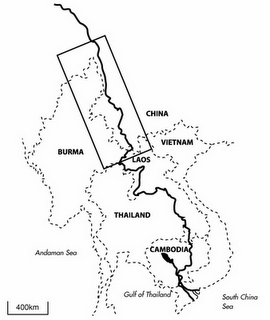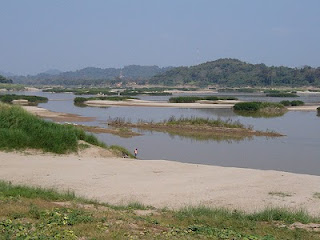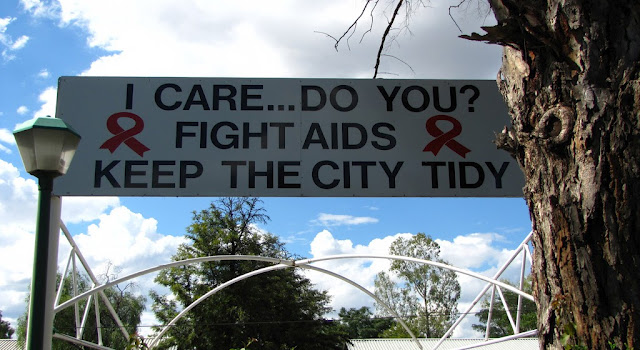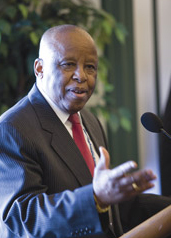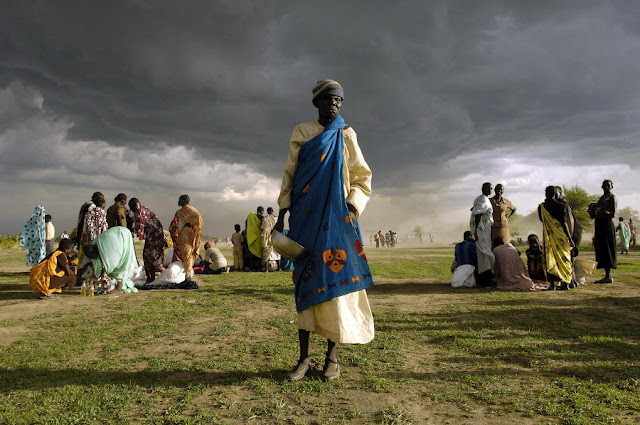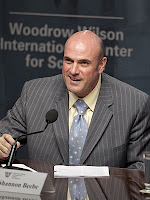-
Whither the Demographic Arc of Instability?
›December 14, 2010 // By Richard Cincotta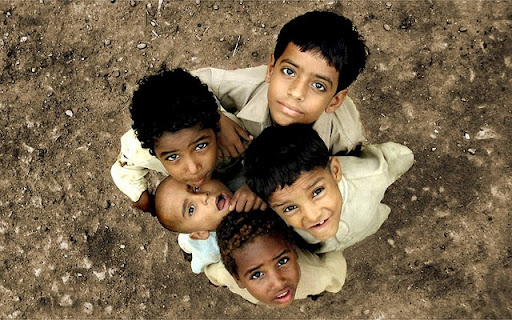
After the Berlin Wall came down in 1989, the demand for geostrategic mapping went up. Pentagon geographers revised maps almost monthly in order to keep pace with the rapid sequence of events – the toppling of Eastern Europe’s communist regimes, the rise of pro-Western liberal democracies in their place, and the reunification of Germany. Then came more borders, and even more maps: the breakup of the Soviet Union and the withdrawal of forces from former Warsaw-Pact states, the splintering of Yugoslavia and Czechoslovakia, and requests for accession to NATO. When, in the late 1990s, it became apparent that the end of the Cold War would have little effect on the emergence of civil and ethnic conflicts in Africa, Asia, and Latin America, and that a network of militant Islamist organizations had coalesced across Muslim Asia and Africa, strategic mapmaking shifted focus to identifying conditions in the Global South.
-
Bringing Cambodia Back from the Brink: An Audio Interview with Suwanna Gauntlett
›December 10, 2010 // By Hannah MarquseeThree decades after the Khmer Rouge regime wiped out an estimated 1.7 million people – one fifth of Cambodia’s total population – the environment and Cambodian people are still feeling the effects.
The Pol Pot regime’s policy of agrarian collectivization dramatically reorganized land ownership and relocated millions from urban to rural areas. The ensuing decades of Vietnamese occupation and civil war further changed Cambodia’s workforce, dislocating millions.
The “Khmer Rouge regime increased the destruction of natural resources exponentially,” Suwanna Gauntlett, founder and CEO of Wildlife Alliance, told ECSP in this interview. Today, 78 percent of Cambodia’s 14.5 million people live in rural areas, according to the World Bank, nearly all of whom work as subsistence farmers. These rural households account for almost 90 percent of Cambodia’s poor and 36 percent of the total population in 1997.
“These Forests Were Silent”
When Wildlife Alliance arrived in Cambodia in 2000, “these forests were silent,” Gauntlett said. “You couldn’t hear any birds, you couldn’t hear any wildlife and you could hardly see any signs of wildlife because of the destruction.”
In one village, Chi Phat, Gauntlett noted how years of slash-and-burn agriculture had left a “circle of death” around the village as farmers gradually encroached further into the forest.
Cambodians have compensated by turning from traditional subsistence farming to illegal logging, wildlife trafficking, slash-and-burn agriculture, mining, and other unsustainable development (with significant Chinese investment). This has contributed to food and water insecurity, rapid deforestation, habitat loss, and species extinctions. In 1990, 73 percent of Cambodia’s land was covered by forest. By 2007, that number had dropped to 57 percent. Cambodia’s 146 threatened plant and animal species have also felt the effects of this loss. The Indochinese tiger, native to Cambodia, is now thought to have less than 30 individuals remaining in the entire country.
Integrated Solutions
Focusing on the Cardamom mountain range – Cambodia’s largest remaining intact forest – Wildife Alliance established several community-based agriculture and ecotourism programs to help villagers escape the “vicious circle” of poverty and environmental destruction. Ten years later, “there’s been tremendous progress in the geographic areas of our projects,” said Gauntlett.
In another village, Sovanna Baitong, Wildlife Alliance’s community agriculture program has raised the incomes of some residents to over $200 a month when the national poverty level is $200 a year, Gauntlett said. Today this village has a school, a clinic that provides health care and family planning, and a micro-credit fund. This is all managed by the community leaders, 30 percent of whom are women.
Ten years ago, “it was a mess,” Gauntlett said. “It’s amazing to see the difference.”
However, in parts of the country where Wildlife Alliance does not operate, deforestation continues at an alarming pace, often fueled by Chinese and other foreign investment. In some parts of the country, “deforestation has led to very severe water shortages,” including villages where people have to walk up to 20 kilometers for water because “there is no more underground water,” said Gauntlett. This has troubling implications for Cambodian security, particularly with aggressive hydrological development of the Upper Mekong continuing in China and Laos.
“I’m afraid that’s what’s going to happen throughout Cambodia – that this water shortage will lead to food shortage [which] will lead to civil unrest,” Gauntlett said.
Sources: BBC, Cambodian Genocide Program, The Washington Post, Wildlife Alliance, World Bank, WWF, UNEP.
Photo Credit: “Farmer at Sovanna Baitong” and “Suwanna Gauntlett” Courtesy of Wildlife Alliance. -
Robert Engelman, Worldwatch Institute
The Number Left Out: Bringing Population Into the Climate Conversation
›December 9, 2010 // By Wilson Center Staff Numbers swirl around climate change.
Numbers swirl around climate change.
So many parts per million of greenhouse gases in the atmosphere. So many gigatons of carbon dioxide emitted. So many degrees Celsius of temperature rise that we hope won’t happen. Yet one number rarely comes into play when experts or negotiators talk about the changing atmosphere and the warming of the planet: the number of humans putting heat-trapping gases into the air.
The original version of this article, by Robert Engelman, appeared on the Worldwatch Institute’s Transforming Cultures blog.
The UK Met Office’s data set for September 2009 of more than 1,600,000 temperature readings from 1,700+ stations.
Numbers swirl around climate change.
So many parts per million of greenhouse gases in the atmosphere. So many gigatons of carbon dioxide emitted. So many degrees Celsius of temperature rise that we hope won’t happen. Yet one number rarely comes into play when experts or negotiators talk about the changing atmosphere and the warming of the planet: the number of humans putting heat-trapping gases into the air.
The relative silence isn’t hard to understand. Population is almost always awkward to talk about. It’s fraught with sensitivity about who has how many children and whether that is anyone else’s business. It’s freighted with sexuality, contraception, abortion, immigration, gender bias, and other buttons too hot to press into conversation. Yet two aspects of population’s connection to climate change cry out for greater attention – and conversation.
One is that population – especially its growth, but other changes as well – matters importantly to the future of climate change, a statement that as far as I can tell is not challenged scientifically. (The Intergovernmental Panel on Climate Change, for example, accepts the accuracy of the so-called Kaya identity, which names population among the four factors that determine emissions growth from decade to decade.) And, two, addressing population in climate-friendly ways is also fundamentally people-friendly, in that it involves no “population control,” but rather the giving up of control – especially control of women’s bodies by people other than themselves.
A new Worldwatch Institute report, which I authored, offers details, findings, and recommendations on both the importance of population in climate change and how to address it. The report looks at some of the history of the population-climate link – in particular, interesting work by William Ruddiman, who hypothesizes that the agricultural revolution contributed to global warming thousands of years ago. And it addresses the common objection that population growth can’t be that important in greenhouse gas emissions growth because countries with high per capita emissions tend to have smaller families than low-emitting countries.
Equity in per capita emissions, I argue, is an essential goal – and without it, no global effort to shrink emissions can succeed. The imperative of an equal sharing of atmospheric carbon space is among the most powerful arguments for a smaller world population. When greenhouse gases other than carbon dioxide – such as methane and “black carbon” – are considered, per capita emissions gaps are not as wide as many writers believe. And the amount of all these gases that equal emitters can contribute without altering the atmosphere shrinks in direct proportion to population’s growth.
Arguments about population’s role in climate change are unnecessarily heated, however. Even if the growth of human numbers played only a minor role in emissions growth, it would be worth discussing – not because addressing population will somehow resolve our climate predicament, but because ultimately no other strategy on its own will either. We need the widest possible range of strategies – economic, political, technological, and behavioral – that are both feasible and consistent with shared human values.
On population, the most effective way to slow growth is to support women’s aspirations. Almost all women aspire to gain an education, to stand in equality with men, and to make decisions for themselves – including whether and when to give birth. Policies and programs to help women achieve these aspirations exist in many places. But they don’t get the attention, support and funding they deserve. And they are rarely seen as climate-change strategies.
As societies, we have the ability to end the ongoing growth of human numbers – soon, and based on human rights and women’s intentions. This makes it easy to speak of women, population, and climate change in a single breath.
Robert Engelman is vice president for programs at the Worldwatch Institute and the author of “Population, Climate Change, and Women’s Lives.” Please contact him if you are interested in a copy of the report.
Sources: UK Met Office, World Resources Institute.
Image Credit: Adapted from “Met Office Climate Data – Month by Month (September),” courtesy of flickr user blprnt_van, and report cover, courtesy of the Worldwatch Institute. -
David Lawson, Wildlife Conservation Society
Afghanistan’s Non-Confrontational Conservation
›December 7, 2010 // By Wilson Center Staff
Excerpt from the Center for a Better Life:
Afghanistan is more than war and turmoil; it has a long and colorful history, strong cultures and a stunning landscape. It has enormous biodiversity, as it sits at the crossroads of what biologists call “biological realms.” The country, therefore, has plants and animals that also occur in Europe, northern Asia, India, south Asia and Africa. It has nine species of wild cats, which is the same as the whole of sub-Saharan Africa, as well as an estimated 800 plant species that occur nowhere else in the world. In other words, Afghanistan is worth attention in terms of its biodiversity alone.These natural resources are also critically important from the people’s perspective. After 30 years of conflict, more than 80 percent of Afghanistan’s population relies directly on natural resources for their livelihood. Most of the inhabitants are rural and desperately poor by world standards. Child mortality is the highest in the world, and their infrastructure is mostly broken down and inoperable. The economy is donor-dependent, and the Afghan government is still in its infancy. Outside the capital of Kabul, governance sometimes seems non-existent. As a result, movement away from the major population centers can be very risky due to the presence of various insurgent groups.
And yet, what is seldom mentioned in newscasts and media is that the Afghans are proud and resilient. They want what everyone else wants: education for their children, healthcare for the young and elderly, and reliable livelihoods to support their families. Then they want to get on with their lives in their own unique, culturally diverse way, free of violence and conflict.
Understanding Cultures
Understanding these things is one reason why the Wildlife Conservation Society (WCS) has been successful in Afghanistan. When hearing of the Society’s field work in this war-torn country, most people are surprised. They wonder how, with its pressing problems, Afghanistan can afford the time, let alone the resources, to conserve its remaining wildlife and wild places. But this is one of the core strengths of WCS – to offer assistance in conserving natural resources at a practical level within a country in need, like Afghanistan. As one of the oldest conservation organizations in the world, with more than 100 years of field conservation experience, the Society has extensive seasoning under extreme circumstances. Currently, WCS has more than 600 projects in place with 3,000 staff; and, many of these projects are in the most remote areas of the world.
Since 2006, USAID has supported WCS’s work in Afghanistan within three geographical areas – the northeast in Badakhshan Province’s Wakhan District, Bamiyan’s central province and the eastern, forested Nuristan province. Experts chose these areas because they believed they held the largest numbers of untouched remaining wildlife; this presumption generally proved correct. Through the years, WCS has created trust by having conservation teams on the ground and working year-round with local communities. Similar trust has been established with the relevant ministries by WCS’ central office, located in Kabul, through continuous presence and assistance.
Results are impressive. More than seven pieces of environmental legislation were enacted; 10,000 Afghans received conservation training; the first biological surveys in 30 years were completed (which doubled as crucial skills development exercises for Afghan scientists); the first wildlife/domestic stock disease assessments were accomplished, with corresponding human health effects, plus many more exemplary achievements. One of the more intriguing results was WCS’ ability to build local governance in the most remote communities, thus connecting communities that had seen no real government representatives for years. This link extended to district authorities then to provincial authorities, and finally to the Kabul central government. This extension of Afghanistan’s rule-of-law is paramount because it improves governance, which is one of the more crucial strategic needs in the country today.
How was a non-governmental conservation organization able to contribute to governance and rule-of-law? It is simple. Wildlife conservation is usually a non-confrontational issue, and most people, when exposed to the process, take an active interest and express opinions. Rural people have grown up with and are surrounded by wildlife everyday; they have local knowledge and feel comfortable discussing how things have changed. They want to be empowered to make natural resource decisions in the areas in which they live. WCS staff encourages local people to discuss species protection with their local and provincial governments. In some instances, WCS workers have taken government officers into communities that cannot recall ever seeing a government official. These processes and contacts evolve and can be used as basis for non-conservation related discussion. These processes and relationships become the building blocks for extending governance and empowering local communities. And, the process works.
Continue reading on the Center for a Better Life.
David Lawson is the Wildlife Conservation Society Afghanistan country director.
Photo Credit: “Bamiyan Band-e-Emir,” courtesy of flickr user USAID Afghanistan. USAID and WCS have been working in the Band-e-Amir lakes region since 2006 to create a national park. -
Managing the Mekong: Conflict or Compromise?
›December 1, 2010 // By Russell SticklorAt nearly 5,000 kilometers long, the Mekong River is one of Asia’s most strategically important transboundary waterways. In addition to providing water for populations in the highlands of southern China, the Mekong helps support some 60 million people downstream in Southeast Asia, where the river is a key component of agricultural production and economic development.
In recent years, however, the Mekong has emerged as a flashpoint for controversy, pitting China against a coalition of downstream nations that includes Thailand, Laos, Cambodia, and Vietnam. The countries of the Lower Mekong argue that Beijing’s construction of multiple dams on the Upper Mekong is robbing them of critical water resources, by decreasing both the quality and quantity of water that makes it through Chinese floodgates and spillways. China, however, mindful of soaring energy demand at home, has continued its campaign to harness the hydroelectric potential of the Upper Mekong and its tributaries – but at what cost to the environment and Beijing’s relationships with Southeast Asia?
China’s Hand on the Faucet
China’s total energy demand just recently passed the United States and is expected to continue to increase in the near-term – by 75 percent over the next 25 years, according to the International Energy Agency.
As a result, Beijing has been looking to bolster its energy security by reaching out to develop energy resources in Africa, Latin America, and the Middle East, as well as along the Mekong and in the East and South China Seas.
In that context, China’s aggressive hydroelectric development of the Upper Mekong — known in China as the Láncang Jiang (shown in the boxed area of the map at right) — makes perfect sense. The river’s sizeable elevation drops make it a rich source of energy; already, 15 large-scale dams have either been completed or are under construction on the Upper Mekong in Tibet and Yunnan.
Those dams also provide China with enormous geopolitical leverage over downstream nations. With little more than the flick of a switch, the Chinese government could substantially curtail the volume of flow entering the Lower Mekong basin. Doing so would of course be tantamount to an act of war, since depleted flow volumes in the Lower Mekong would hinder crop irrigation, jeopardize food security, and endanger the health of the region’s economically critical freshwater fisheries, which are among the world’s most productive. Chinese floodgates and spillways essentially give Beijing de facto control over Southeast Asia’s water security.
The View Downstream
To date, China has never threatened to deliberately reduce the flow of the Mekong to its downstream neighbors. Nevertheless, the perception of threat in Southeast Asian capitals remains high.
Already, a number of the region’s governments — represented formally through the Mekong River Commission, a 15-year-old organization that China still has not joined as a full-fledged member — have complained that completed or in-progress Chinese dams are resulting in less water entering their countries, a phenomenon that becomes particularly pronounced during periods of drought, as observed this summer. Further, there is also the issue of water quality. Since Chinese dams trap silt being flushed out of the Himalayas, that nutrient-rich material cannot be carried downstream, where it historically has helped create fertile soils in the floodplains of the Lower Mekong basin.
Quality and quantity concerns aside, there are also structural issues concerning how Beijing goes about its business on the Upper Mekong. Since it is only a “Dialogue Partner” to members of the Mekong River Commission, China is not required to seek approval from downstream nations on hydroelectric development of the river’s Chinese stretch, even though that development has both direct and indirect implications for water security in the Lower Mekong basin. China has even shown a penchant for deliberate secrecy as it develops its stretch of the river, choosing to share a minimal amount of hydrological data with downstream neighbors and typically refraining from even announcing new dam projects.
“The Security Implications Could Hardly Be Greater”
Given its geographic position, Cambodia is particularly vulnerable to China’s stewardship decisions. With one of the poorest populations in Southeast Asia and also one of the highest fertility rates, at 3.3 births per woman, the potential for water scarcity issues is real. By mid-century, its population is projected to jump from its current 15 million to nearly 24 million.
“The government of Cambodia will be entirely at the mercy of Beijing,” said Wilson Center Scholar and Southeast Asian security expert Marvin Ott. “For Cambodia, the question becomes how they can curry China’s favor so as to avoid coercive use of the Mekong — or find some way of exerting counter-pressure on Beijing.”
Overall, population for mainland Southeast Asia is projected to rise from its current 232 million to 292 million by 2050. This growth will require increased agricultural output across the region and thus increased reliance on the waters of the Lower Mekong. The Lower Mekong nations’ shared dependency on the river and China’s continued unilateralism in the Upper Mekong could have serious repercussions for the region, said Ott:The security implications could hardly be greater for the downstream states. With the dams, China will have literal control over the river system that is the lifeblood of Laos, Cambodia, and Vietnam. The power this gives China is equivalent to an invasion and occupation of a country by the Chinese army.
For its part, the PRC maintains that water woes in the Lower Mekong are not its doing. In response to the chorus of Southeast Asian claims that China diverts or stores more than its fair share of water, Beijing’s typical refrain has been that blame for low water levels downstream lies not with Chinese water resource management but with heightened precipitation variability associated with climate change. Chinese water officials also contend that the Lower Mekong countries’ complaints are misdirected because water from the Chinese-controlled sections of the Upper Mekong basin accounts for less than 20 percent of the Mekong’s total flow volume by the time the river reaches its natural outlet in the South China Sea.
There are some indications, however, that China may be experimenting with a more open approach to engaging downstream nations. Earlier this year, China overturned precedent by offering top Southeast Asian government officials a tour of what had once been a top-secret hydro project, the mammoth Xiaowan dam. Some critics insisted Beijing’s fear of growing U.S. influence in the Lower Mekong helped motivate the rare show of transparency, while others said it was a means to curry favor with Southeast Asian nations so that they would support China’s controversial resource-development strategies in the South China Sea. Yet regardless of motive, Beijing’s move away from secrecy – if sustained – could do a great deal to smooth over regional tensions.
Dammed If You Do, Damned If You Don’t
Beyond some limited transparency, Beijing also hopes to mitigate concerns about development of the Upper Mekong by offering funding or logistical support for similar large-scale hydroelectric facilities on the Lower Mekong. The move has been largely welcomed by the Mekong River Commission countries, which envision dams of their own generating much-needed energy input for national grids, accelerating continued economic modernization, and enhancing flood control. As of 2009, there were 12 dam projects for stretches of the Mekong south of the Chinese border and many more planned for key tributaries.
The danger in such deal-making is that the environmental costs will be lost in the shuffle. A series of major dams would fundamentally alter the Mekong’s hydrology, which could lead to the degradation of sensitive riverine ecosystems, the disruption of upstream migratory routes for fish that serve as local dietary staples, and the decline of fresh water fisheries that form the backbone of many local economies.
Given the long-term effects on the food, environmental, and economic security of the Lower Mekong heartland, Beijing’s attempt to ease water tensions with a new round of dam construction may end up doing far more harm than good. Unfortunately, with both China and the Mekong River Commission countries currently viewing the dam proposals as something of a win-win, planning and construction are likely to move forward over the coming years.
Sources: Financial Times, Foreign Policy, International Institute for Strategic Studies, Los Angeles Times, Mekong River Commission, National Geographic, New Asia Republic, Phnom Penh Post, Population Reference Bureau, Stimson Center.
Photo Credits: “Xiaowan Dam Site (Yunnan Province, China, 2005),” (Top) courtesy of flickr user International Rivers; Map (Middle) courtesy of International Rivers; “Thailand – Isaan, Mekong River,” (Bottom) courtesy of flickr user vtveen. -
Former Botswana President Champions Health, Governance Issues
›November 16, 2010 // By Wilson Center StaffOriginally featured in the Scholar Spotlight, Centerpoint, November 2010.
His Excellency Festus Mogae, who served as president of Botswana from 1998–2008, recently spent several months at the Wilson Center as a public policy scholar. During his stay, he conducted research, networked with senior policy officials in the U.S. government, the United Nations, and with NGO representatives in Washington and New York, and attended Wilson Center seminars related to health and governance.
Since leaving office, Mogae has advocated for governance reform in Africa, notably presidential term limits, and efforts to mitigate the effects of climate change. Another critical initiative he is pursuing actively is HIV/AIDS prevention across Africa.
Mogae is the founder and chairman of Champions for an HIV-Free Generation, a group that assists current African presidents in dealing with the AIDS pandemic. This year, the delegation visited South Africa, Namibia, Mozambique, and Swaziland and, most recently, Zambia in October. The group seeks policy and attitude changes among the leaders of these nations and also advocates for increased financing for AIDS prevention in their health budgets. “If [these countries] allocate their own resources, the donor agencies will see they are serious about this problem” and match funds, said Mogae.
“We take the view that a more outspoken leadership must come from the continent regarding the AIDS epidemic,” he said. “African leaders must not only care but also be seen by donor countries and agencies as leading from the front on these matters.”
The group includes Mozambique’s Joaquim Chissano, Tanzania’s Benjamin Mkapa, Zambia’s first president Kenneth Kaunda, former Vice President of Uganda Speciosa Wandira, and former Chairperson of Kenya’s National AIDS Control Council, Miriam Were. Also in the coalition are two notables from South Africa, Nobel Laureate Archbishop Desmond Tutu and Constitutional Court judge, Justice Edwin Cameron.
The Champions coordinate with local health representatives based in Africa, from UNAIDS, the World Health Organization, PEPFAR, and the Gates Foundation, which prepare country reports on the status of AIDS. Then, armed with this research, the group meets with African leaders, including the presidents, finance and health ministers, local government and parliamentary officials, private sector, union, and civil society representatives, and church groups to lobby for policy changes.
“We highlight success stories on the continent so others can emulate them,” Mogae said. “We are calling for social behavioral change, but that can only happen if advocated and led by the top religious and traditional leadership.”
One particular challenge has been mother-to-child transmissions. He said in sub-Saharan Africa, in 2000, 40 percent of children born to HIV-positive mothers got infected but by 2008, the figure was down to three percent. The target is zero, he said.
Another major initiative chaired by Mogae is the Coalition for Dialogue on Africa, or, CoDA, a joint venture among the African Development Bank, the African Union Commission, and the UN Economic Commission for Africa. This global effort focuses on education, agriculture and conservation, energy and natural resources, and helping women. CoDA currently is organizing a symposium on women’s empowerment, he said, that will focus on education, and reforming land ownership and marriage laws.
These and other organizations with which he is affiliated aim to help shape policies and set priorities for Africa. He said, “We can’t ask the international community for help unless we first help ourselves.”
Dana Steinberg is the editor of the Wilson Center’s Centerpoint.
Photo Credit: AIDS sign in Gaborone, Botswana, courtesy of flickr user cordelia_persen. -
Where Have All the Malthusians Gone?
›Forget youth bulges and population bombs; lately, the population story has been all about the baby bust. The cover of this month’s Foreign Policy features “Old World: The graying of the planet – and how it will change everything,” by Phillip Longman, and author Ted Fishman recently appeared in The New York Times and on NPR to talk about his book, Shock of Gray: The Aging of the World’s Population and How It Pits Young Against Old, Child Against Parent, Worker Against Boss, Company Against Rival and Nation Against Nation. Nicholas Eberstadt covered similar issues in Foreign Affairs with his article, “The Demographic Future: What Population Growth – and Decline – Means for the Global Economy.”
To the extent that policymakers take away a sense of urgency to reform retirement institutions and potentially reevaluate military strategy, the recent spate of publications about aging is useful. But policymakers should not be misled into thinking that the population tide has turned and resources for education, development, and family planning are no longer necessary. While global population growth is slowing, it has not stopped, and the political and economic consequences of continued growth and youthful age structures across most of the Global South will be dire.
A Population Bomb…of Old People
Eberstadt, Fishman, and Longman argue for the need to prepare for a future where there are large proportions of elderly dependents and relatively few workers to support them, and they chronicle the many challenges that may result, including political resistance. The October protests in France against raising the pensionable age from 60 to 62 — which, despite the hullabaloo, fall far short of the levels needed to improve France’s long-term economic position — are but one example of the reform resistance they warn about.
The concern is that while the Global North – Europe and Japan in particular – scramble to meet the needs of their older citizens and preserve the health of their economies, their powerful positions in the international system are at risk. As Fishman states, “It now looks as if global power rests on how willing a country is to neglect its older citizens.” China, a country on the cusp of aging, has thus far chosen neglect over meaningful investment, stoking more fear that the Global North may fall behind.
Though a focus on economic health is useful, other aspects of their arguments do a disservice, particularly those that start from the premise that the days of Malthusian angst over the planet’s ability to support a rapidly growing population are long gone.
Echoing Fred Pearce in his The Coming Population Crash and Our Planet’s Surprising Future, Longman argues without reservation that dangerous population growth is a thing of the past, and instead, the world faces a “population bomb…of old people.” He even goes so far as to claim that “having too many people on the planet is no longer demographers’ chief worry; now, having too few is.”
I have to ask: what demographers did he talk to? Articles published over the last year in the field’s top journals — Demography, Population and Development Review, and Population Studies — certainly explore low fertility, but they also cover a range of youth- and growth-related issues and topics such as mortality, teen parenthood, and immigration. And within the field of political demography in particular there is still quite a lot of attention being paid to the implications of population growth and youth bulges on civil conflict and human security. Even Foreign Policy, in which Longman’s article appears, publishes an annual Failed States Index that argues there is an important relationship between demographic pressure and state collapse.
As studies like the Failed States Index and the National Intelligence Council’s Global Trends project show, contrary to Pearce et al., carrying capacity arguments are not completely outmoded. Regardless of how extreme the impact of an aging population will be on developed nations in the near future (although the United States will almost certainly be less affected than others), in many parts of Africa, South Asia, and the Middle East, population growth is straining local water and land resources and creating instability — issues that will likely be exacerbated by climate change.
Geographic Bias
If there really is more attention being paid among demographers to low fertility it may well be due to institutional and geographic bias. After all, most of the funding for demography comes from Western nations concerned with their own decline. Likewise, all the top journals are American or European.
Though it is correct that most advanced industrial states are aging because of low fertility, for a large part of the world, population growth is still the number one issue. Declining fertility in most countries of the world means that populations are getting older, but this is not the same as saying they have a problem with aging. Between 1980 and 2010, the median age of the less developed countries, excluding China, rose from 19 to almost 25 and the world’s least developed countries saw a rise from 17 to 20 years. Median age in more developed countries, however, went from 32 to 40 — a level twice that of the least developed countries.
Many of the low-fertility countries Longman cites — Iran and Cuba, in particular — are exceptions among developing countries, rather than the rule. The UN Population Division estimates that sub-Saharan Africa will gain 966 million people by 2050 – more than the current population of all of Europe – and, as Richard Cincotta and I have both argued on this blog previously, the total fertility rate (TFR) projections used in those estimations are likely low. Rapid population growth in sub-Saharan Africa has already exacerbated many countries’ abilities to meet the growing needs of their populations, causing civil conflict and instability, and will continue to do so in the future.
Why is it Important to Get it Right?
Alarmism is useful when it grabs the attention of policymakers and a public that is overloaded with information, but it is also risky. Both Pearce and Longman take jabs at Paul Ehrlich because his “population bomb” never exploded. What they fail to note is that Ehrlich’s predictions could have proven right, except that he was successful at scaring a generation of policymakers into action. Funding towards population programs increased greatly in the wake of such research. If those of us who write about the dangers of aging are successful, perhaps we will be so lucky to look as foolish as Ehrlich one day.
If these warnings fall on deaf ears and policymakers do not act to reduce the burden of entitlements, certainly budgets will be strained beyond capacity and the dire future predicted by Fishman, Pearce, and Longman may well become a reality. On the other hand, if policymakers similarly disregard carrying capacity issues in the developing world, conflict and misery are sure to continue in these places and may well worsen.
Jennifer Dabbs Sciubba is the Mellon Environmental Fellow in the Department of International Studies at Rhodes College. She is also the author of a forthcoming book, The Future Faces of War: Population and National Security. Follow her on Twitter at @profsciubba for more on population-related issues.
Sources: Foreign Affairs, Foreign Policy, NPR, National Intelligence Council, The New York Times, Population Reference Bureau, Reuters, UN.
Photo Credit: Adapted from “Protest/Manifestation,” courtesy of flickr user lilicomanche. -
The Ultimate Weapon Is No Weapon: Human Security and the New Rules of War and Peace
›To understand the security concerns of the developing world, we must understand that lack of institutional capacity has created a “house of cards,” said U.S. Army Lieutenant Colonel Shannon Beebe, speaking at the Wilson Center on October 19. “When that card gets pulled out, the house is going to fall.”
Beebe, a senior Africa analyst for the Department of Defense, and Mary Kaldor, professor at the London School of Economics and Political Science, discussed their new book, The Ultimate Weapon is No Weapon: Human Security and the New Rules of War and Peace, in which they argue for a broader conception of human security. “The world is suffering from a lack of a security narrative,” said Beebe.
“The ultimate weapon is not the F-22,” said Kaldor, “it is a change of mindset.”
Creating Pirates: Threats vs. Vulnerabilities
“What happens when a man is already a fisherman and you take all his fish away? You create a pirate,” said Beebe. The environmental and human security threat of overfishing in Somalia was not taken seriously as a security threat until it was left unchecked for 20 years and developed into a “real kinetic threat” of piracy, he said.
Beebe spent a year interviewing 80 to 90 Africans in 13 countries, including military leaders, academics, NGO leaders, and even Somali cabdrivers in the United States, about how they view their security. “What came back was resounding, sobering, and confusing,” said Beebe. Amongst those interviewed, few expressed traditional “kinetic” security concerns stemming from physical threats. Instead it was the “conditions-based vulnerabilities” — such as poverty, health, water and sanitation, gender equality, and climate change — that were identified as primary security threats.
“Until we stop giving Africans and the developing world our definition of what is right for their security and start listening to what they are saying is relevant to their security, we are going to continue to marginalize ourselves,” Beebe said.
Filling The Security Gap
There is currently “a profound security gap,” Kaldor said, and a failure to meet the diverse needs and root causes of violence in much of the developing world. Filling the security void has been an array of both good and bad actors – NGOs, humanitarian agencies, militias, and warlords. If we do not adapt our own security strategies to fill this gap, “it will be filled by someone [else],” Beebe warned.
Human security must be incorporated into our security narrative, Beebe and Kaldor argue in their book, which means addressing the security needs of individuals and communities, not just the state. It also involves protection from violence, material deprivation, and natural disasters. They advocate for more robust global emergency forces that would act as a global national guard or police force.
Integrating Human Security
Promoting the rule of law domestically and shifting interventions “from a war paradigm to a law paradigm” is crucial, said Kaldor. Furthermore, we must change our mindset so that we value the lives of those in foreign countries as highly as we value American or European lives. “You can’t bomb your own people,” she said.
Our greatest challenge, Beebe explained, is to shift our language from “siloed approaches” to create an interconnected, coherent security narrative. Beebe cited former General Anthony Zinni’s UMC (Ret.) incorporation of environmental security into U.S. Central Command (CENTCOM) strategy during his tenure in the late 1990s as evidence of the possible success of integrated approaches. More recently, the Belgian High Command adopted a human security policy, said Kaldor.
While human security is already being taken into account on the ground, “it is very much organic, rather than institutionalized…we understand that there is an imperative but again it is the security narrative that is lacking,” said Beebe. Only by engaging with individuals and taking their needs into account with a more comprehensive security narrative can we foster lasting and sustainable security, he said.
Photo Credit: “Elderly Woman Receives Emergency Food Aid,” courtesy of flickr user United Nations Photo.
Showing posts from category livelihoods.


